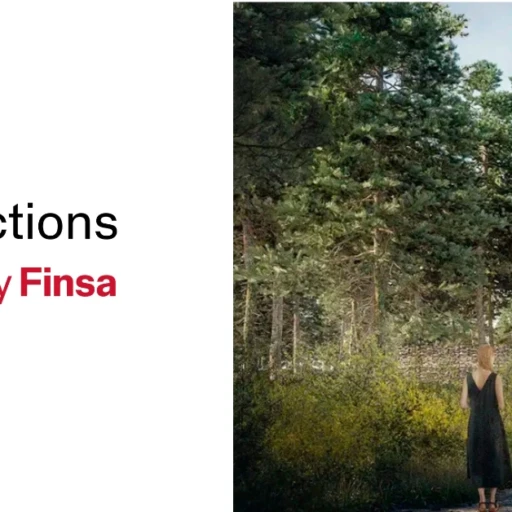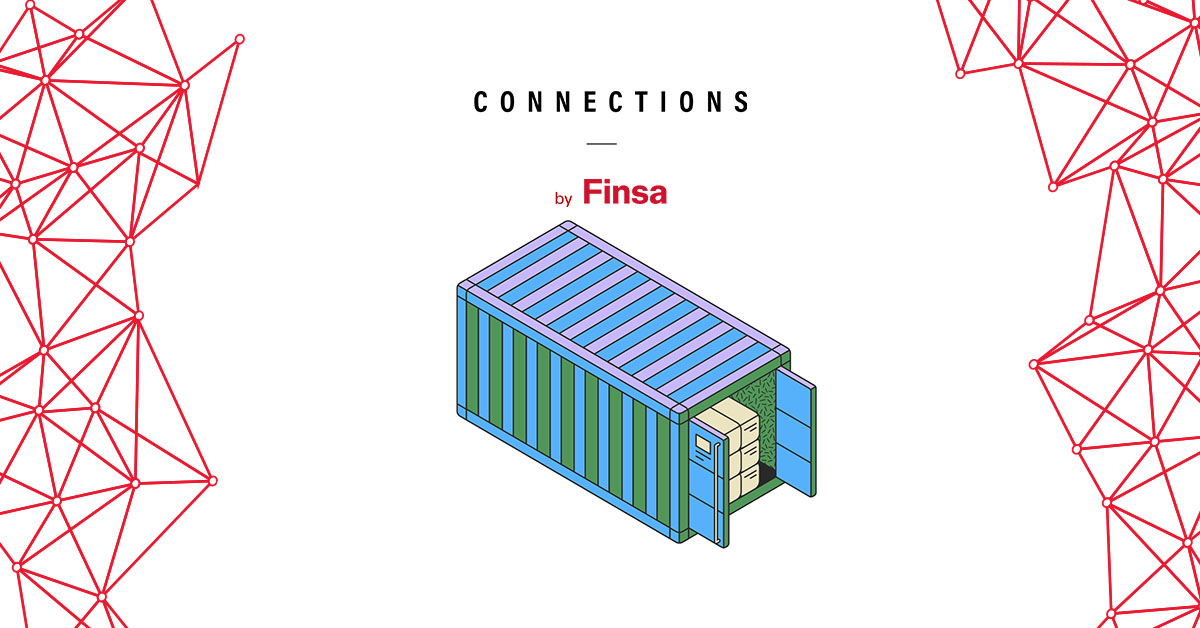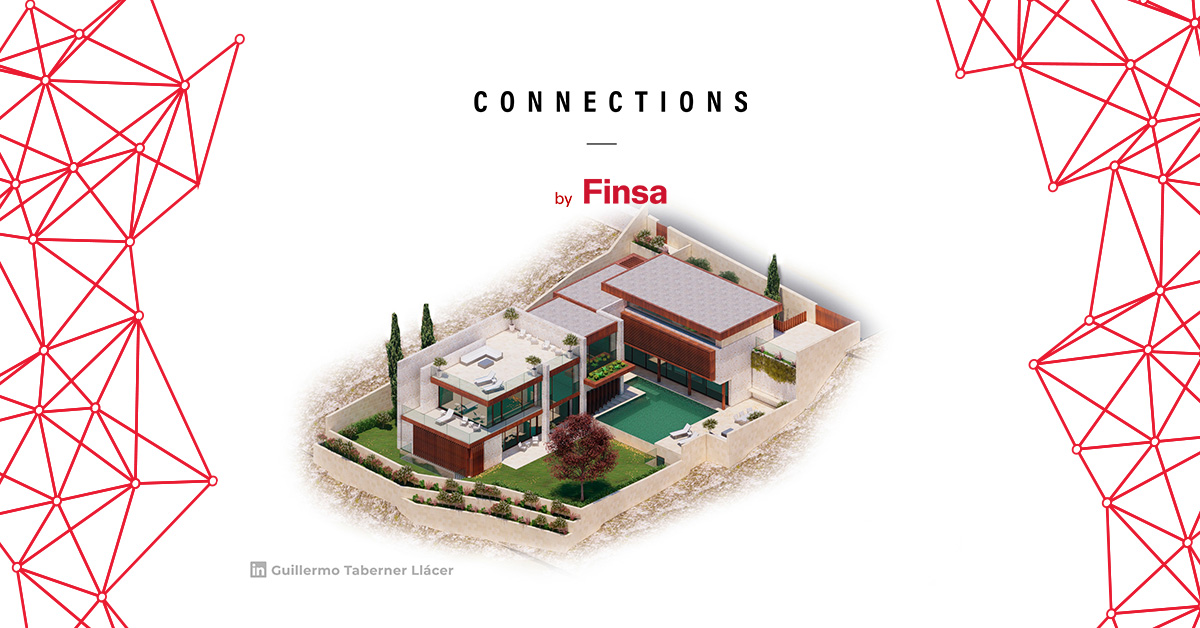That man has always wanted to express creative ability from wood is well known. Only a couple of years ago, in fact, we learned that the oldest monumental sculpture in the world made of this material, the famous Shigir Idol — an anthropomorphic figure found in 1890 in a peatland of the Urals, in Siberia — dates from the beginning of the postglacial period of the Holocene.
Twelve thousand years later, men and women continue to carve wood, carving their way through it, molding it at will in a kind of game, or intimate challenge, with volume and space. Let’s see what half a dozen of renowned sculptors, men and women, whose works are part of exhibitions, museums of contemporary art and private collections have to say.
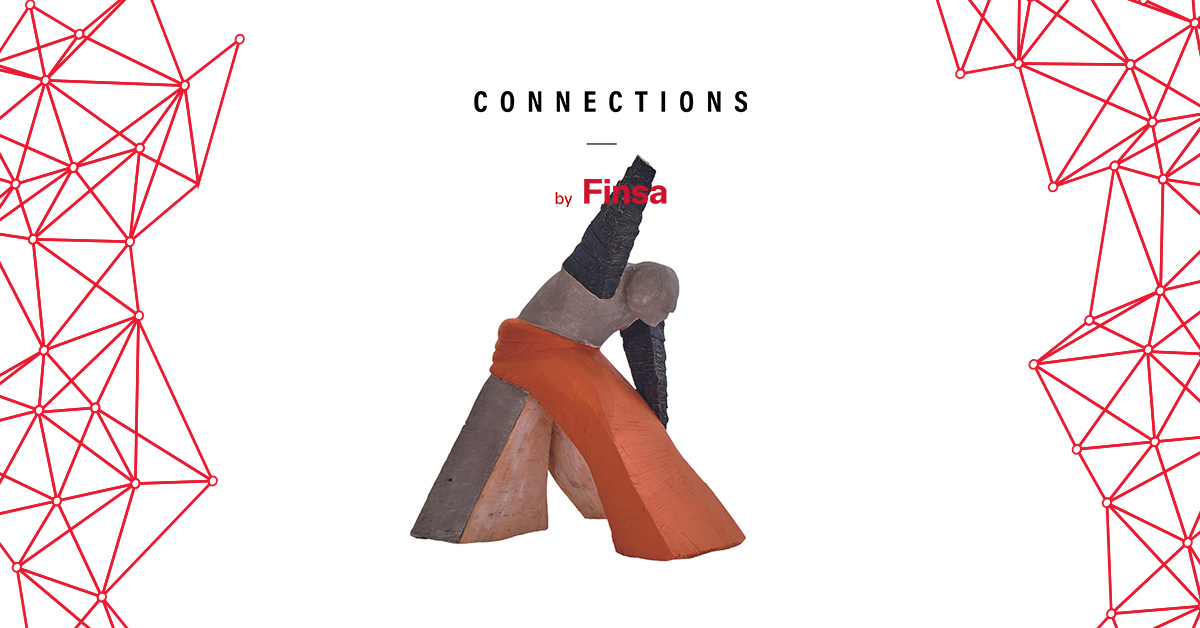
What is the meaning of wood?
It is difficult not to identify Francisco Leiro (Cambados, Pontevedra, 1957) with wood. This Galician and universal artist -who exhibits regularly at the ARCO fair since 1986, settled in New York two years later and who has just exhibited a retrospective at the MARCO museum in Vigo — uses it a lot in his work. For him, it has everything. “Wood is a warm, organic material and for certain works it is wonderful in the sense that it admits very well the assembly, the polychrome, the patinas, the finishes in burned to the fire and is a wonderful support to paint,” he says.
Ver esta publicación en Instagram
In the case of the Luxembourg artist Jhemp Bastin (Ettelbruck, 1963), he was always attracted to it. “I choose wood because it is not a homogeneous or ‘neutral’ material. When I look at the logs in my workshop, I try to capture their exact shape, their curves, their rotations or any other distinctive feature and I also try to see what is hidden inside them. My sculptures are the result of a dialogue between natural material and my artistic vision”, says Bastin.
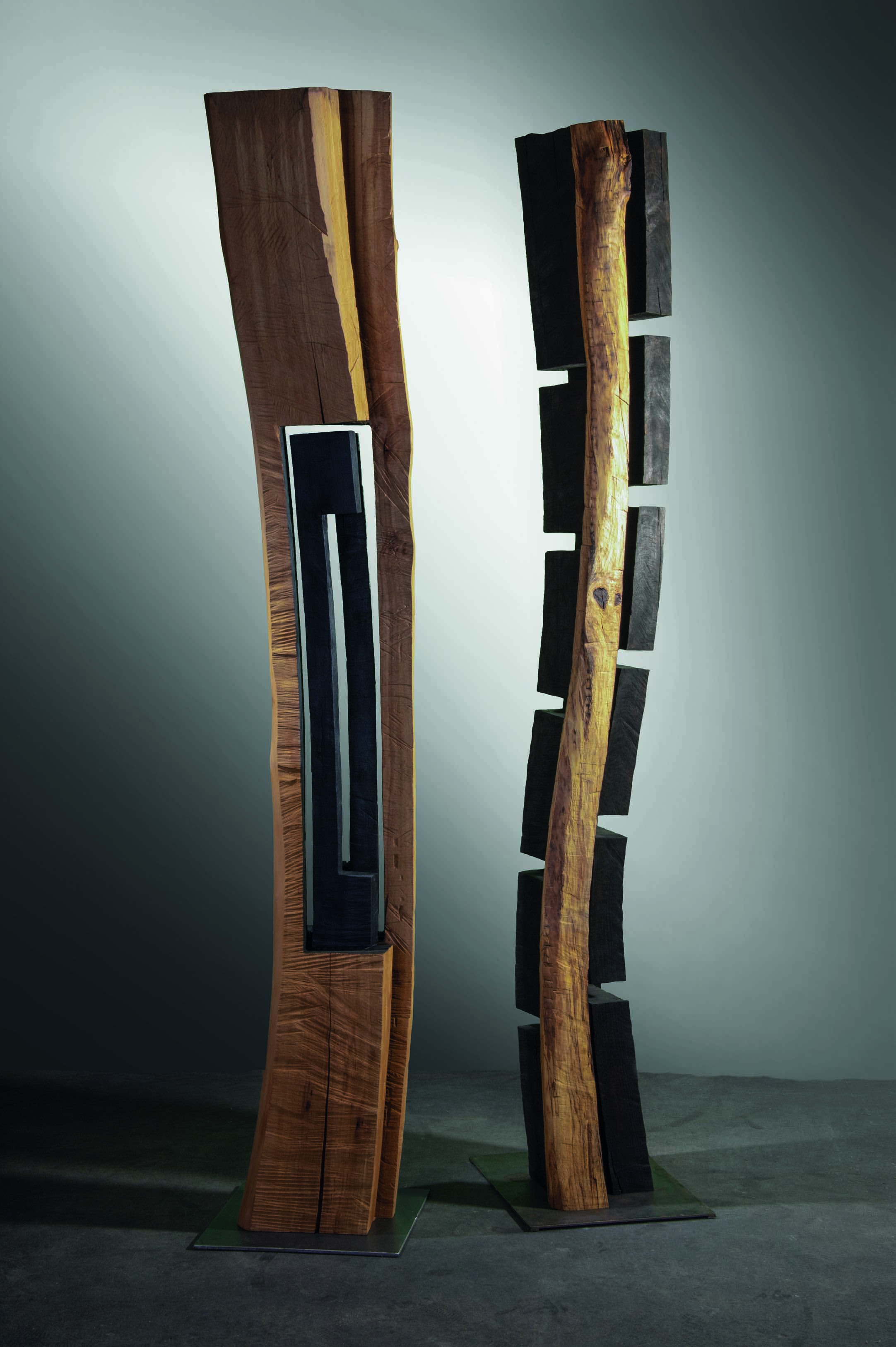
For the Gipuzkoans Claudio y Juan, creators of Flotboats, an artistic project that since winter 2015 combines sea and creation through unique pieces (boats, lighthouses, sailboats, submarines) made by hand with recycled metal and, above all, driftwood, collected on the beach, “it is a living material, organic and of varied textures, hardness and tones. That’s what sets it apart from other materials like concrete or metal”.
Ver esta publicación en Instagram
Their fellow countrywoman Eguzkiñe Egaña, digital artist and artisan, graphic designer and ceramist who has begun to incorporate wood into her production, sees the same qualities: “It is a natural, beautiful, warm, biodegradable, easy to work with and very versatile material. I am interested in its aesthetic quality, but also in what it evokes in us”. On that point, Bastin insists on the idea: “I think we have a very deep and archaic relationship with forests. Trees and wood are deeply rooted in our minds. This emotional attachment that we carry within us makes this material timeless”.
Ver esta publicación en Instagram
Does tradition and family heritage play a role?
But where does this inclination or attraction for wood as a sculptural resource come from? The Italian Aron Demetz (Vitipeno, 1972), one of the greatest representatives of the contemporary wood sculpture, was going to be a dental technician, although it must be said that he grew up surrounded by forests and mountains, in one of the most beautiful villages of the Alps, with a long artisan tradition. “I came to art by and indirect path, although every place influences the person”, says Demetz, who has twice taken his work to the Venice Art Biennale.
Ver esta publicación en Instagram
Bastin, for example, was born in the Ardennes forests region and as a child spent a lot of time walking among the trees. This certainly had a great influence on him. Leiro, for his part, learned to work with wood in the cabinetmaking workshop of his father and grandfather, who made furniture. “From that experience, together with my first works of surrealist sculpture, come my works in which I fuse furniture with the human body”, says the artist, a full member of the Royal Academy of Fine Arts of San Fernando for only a few months.
Ver esta publicación en Instagram
This was not the path for Rosemarie Castoro (1939-2015). Born in Brooklyn, this multidisciplinary artist — she was a painter, sculptor, dancer, performer, photographer, graphic designer, poet, although she hated to be categorised — discovered wood later and almost unintentionally. Werner Pichler, who was her husband and co-founder of the artist’s foundation, tells us. “I think that the choice of material was often a matter of necessity. Rosemarie started working with wood when she was away from her studio for a longer period. Before, she used to work with epoxy resin, but she could not do that when she was not in her studio. So when she was teaching sculpture for five months in Boulder, Colorado, she discovered wood as a new material, and also cow dung”, recalls Pichler. Many years later and thousands of miles away, Egaña, another multifaceted creator, felt the imperative need to use her hands “to create” after many years of digital overdose. “Now I am immersed in the world of sculpture”, she says.
Ver esta publicación en Instagram
Ver esta publicación en Instagram
Is any wood suitable for carving?
“Yes, but it all depends on the type of work that you are going to undertake Says Leiro, who likes to play with size: in his studio there are usually massive works, up to three meters high, and miniature figurines of barely fifty centimeters. “The scale of the work depends on the original idea that I have and always taking into account the space where the piece is going to be located”, he explains.
Ver esta publicación en Instagram
Demetz is of the same opinion regarding the choice of material: “You can use almost any wood, it depends on what you want to do with it”. He has created pieces with lime, cherry, maple, fir, poplar, sequoia, cedar… In fact, he believes that the material is, as the artist, responsible for the final piece: “The decision is a joint one; each work needs its own piece of wood, taking into account concept, size and colour”.
Ver esta publicación en Instagram
However, Bastin does have his favourite trees, “both of which are necessary for my work”. They are oak, “strong, hard, rough and somewhat coarse, but also very sensitive”, and beech, “more elegant, softer and, in a way, charming”. And he always chooses logs from the region where he lives: “There is a sense of familiarity”.
In the case of Claudio and Juan’s work, it is the sea itself that sculpts the driftwood, which reaches the coves, hits the rocks, wears away and thus acquires different shapes and textures. A process that makes each piece unique. “We always go with great enthusiasm to look for these ‘treasures’, although we don’t always find them“, they confess. Recycling is their maxim: “On some occasions we have used wood that did not come from the sea, such as, for example, wood left over from the construction of the San Juan ship in Pasaia, but our intention is to reuse”.
Ver esta publicación en Instagram
Nor does Eguzkiñe Egaña, who uses wood in its most natural form for her pieces, just as she finds it on the beach or in the mountains. The result of these finds —of branches that arrive on the beach of Zarautz from the rivers— is an ephemeral intervention (Where do we come from? Where are we going? is its title) with three giant sculptures installed on the beach itself. “The aim is to think deeply, as a human species, about the idea that we are part of nature, we come from it and we return to it, in a continuous cycle, and at the same time to make us aware of our fleeting existence on the planet”, she explains.
Castoro also sculpted with different types of wood. “Instead of saying ‘this has to be pine or this has to be birch’, her criteria were more size, shape and availability”, says Werner Pichler. This was the case, in 1978, for her outdoor installation Trap A Zoid in Battery Park, New York, for which she needed tree trunks. “I found a note in which she says she contacted the New York parks and forestry department to ask for trees that had already been cut. So she basically recycled”, he says.
Ver esta publicación en Instagram
How do they approach the creative process?
At this point, a question arises: when faced with the trunk from which one of their pieces will emerge, do these wood sculptors start from a very clear idea or do they give some leeway to spontaneity? Claudio and Juan, from Flotboats, initially let the wood guide them “and then, during the most creative part, we love to improvise”.
Ver esta publicación en Instagram
In Egaña’s case, she usually combines both paths. “But it often happens to me, when I choose the first path, the one with everything well thought out and sketched out, that during the process the project takes its own path and, despite having had everything under control, the result is very different. Those accidents that usually happen give you a lot of joy and the result is infinitely much better than what you had planned”, she assures. Leiro, on the other hand, always starts from previous drawings or models when he carves. “And from there I calculate the size and the materials I’m going to need”, he says. As does Aron Demetz, who studies each step in detail: “I prepare my work for a long time and the planning phase takes me a long time before I decide to shape it”.
Ver esta publicación en Instagram
Rosemarie Castoro’s work as a sculptor was a continuous process. “In the choice of the material, the way it was worked and in the final result”, says her husband. Bastin’s work “requires a great awareness of the process”. “As I don’t know exactly what is hidden behind the bark of the tree and inside the trunk, I have to reconsider my initial idea at any time and see how it can evolve. This working process demands a slow approach, which means that, working with a fast machine, I have to proceed very slowly, carefully and consciously”. The Luxembourg artist says this because he always works with a chainsaw, his ideal tool for getting into wood, “a rough and brutal machine that relates very well to the strong and powerful character of a tree”. “After the first approach, my initial idea and the evaluation of the tree, I start the real physical work. My workshop then becomes a very noisy place where the air is filled with sawdust. It is physically heavy work and a very demanding process because every step has to be constantly re-evaluated. However, it is precisely this part that I like the most because I am in active contact with the material. It is this meeting point where physical effort, concentration, wood, technique, form and the idea come together to give birth to a new form, a new sculpture,” he explains.
Ver esta publicación en Instagram
What about other materials?
Leiro has created sculptures with granite and metal, with marble, wrought iron, steel and wires, but also with synthetic resources such as resins, fibreglass, vinyl or polyester. “I don’t close myself to any material”, he confesses. And explains: “The quality of the sculpture is not in the material but in the sculpture itself. Some materials lend themselves better to certain works than others”. Voracity when it comes to materials is another of Demetz’s distinctive traits. “I want to try them all”, says the Italian sculptor emphatically. The creators of Flotboats and Egaña intone a categorical “vade retro” to plastic. “It’s doing a lot of damage and it doesn’t attract my attention”, comments the artist from Guipuzcoa. Plaster, graphite, epoxy resin, lead, steel, concrete… all these materials passed through Castoro’s workshop before wood. One thing led to another. Pure evolution. “The longer she used a certain material, the better she mastered it, the more she perfected her methods. When she worked with wood, something similar happened to her,” recalls Pichler.
Ver esta publicación en Instagram
Ver esta publicación en Instagram
Does wood allow experimentation and exploration?
It is undeniable that Castoro signed a hybrid, multidisciplinary and highly experimental production. Demetz, like Leiro, once he had assimilated the technique, explored the human figure with wood beyond the usual forms. The Italian, however, creates sculptures with an anguished appearance. He marks them with scars. He interweaves beauty and distortion in his work. Instead of presenting polished and perfected works, he prefers the textures of wood and its transformation through various natural processes. He covers them with shavings like fur. Or he pours resin over them. He experiments with fire. “Charring brings the material to an unmistakable status, which triggers reactions recognisable to the viewer and leaves enough space to generate one’s own line of thought,” says Demetz. Leiro, here, seems to be of the same school: “I like to let the viewer somehow finish the work or interpret it as he or she wants to”.
Ver esta publicación en Instagram
Ver esta publicación en Instagram
Experimentation, for Egaña, is the engine, the motivation, the curiosity, the new. “I think that without it the magic ends,” she says. “Even if I am making a piece that a priori could be classified as something traditional, experimentation is always present, because you try new shapes, combine with different materials or apply glazes that you have never used before. For me, there is always something new,” she adds. Bastin has always preferred to play with contrasts in his work: the transparent and the dark, the full and the empty, the geometric and the organic. “In this way, sculpture becomes a meeting point between natural forms and the artistic concept,” he says. “In a way, I am more interested in what happens inside the tree, so I cut deeper and deeper into the wood to create hollow spaces, lines of light, transparency, fragility, balance, mystery…”.
Ver esta publicación en Instagram
What about the future? Do you see more wood in it?
Undoubtedly. It is a unique sculptural material, more contemporary than ever. “Wood is our most important sign of identity. Our pieces would not be understood in any other material”, claim Claudio and Juan. Wood is also the material that defines Metz, who is constantly working on new works, and Francisco Leiro does not intend to stop creating with it. “I will continue to work with wood because it is the ideal material. I never tire of going into the workshop in the morning and smelling the wood and its various perfumes, whether it’s chestnut, cedar, oak or pine itself,” he says. “I’ve tried different forms of expression in wood,” — adds Bastin — and I think it’s a wonderful material that still has a lot of potential to be explored”. To be sculpted.


